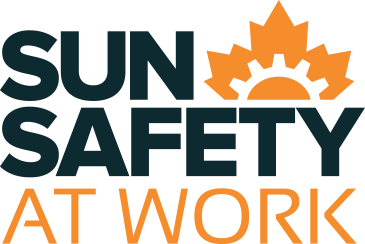Plan is the second step of the Model Sun Safety Program. This step helps a workplace to:
- Review the current processes for managing sun exposure of outdoor workers
- Establish appropriate processes for participation by workers and worker representatives
- Assess and understand the health and safety risks of sun exposure to workers and the workplace
- Understand how effective current control measures are and determine what measures may be required to better manage sun exposure.
Responsibility, Accountability and Authority
Everyone at a workplace is responsible and accountable for occupational health and safety (OHS) in some way. Apart from general OHS responsibilities which all employees have, senior management have the responsibility to:
- Define work and worker roles
- Assign responsibilities appropriate for the role/s
- Establish accountability systems and processes
- Delegate the authority necessary for workers at all levels to do their job safely.
Workers, supervisors and management all have responsibilities and accountabilities to ensure a sun safe workplace. These may be included in a workplace’s sun safety policy, or may be described in separate documents.
Role of the Health and Safety Committee
Canadian occupational health and safety (OHS) legislation provides for the set-up and operation of a health and safety committee. This is a joint worker-management team that helps the employer to create and maintain a safe and healthy workplace. The size, membership and role of the committee is described in OHS legislation and often depends on the size of the workplace, as well as the location or jurisdiction of the workplace.
The health and safety committee plays an important role in a workplace’s sun safety program. The health and safety committee:
- Reviews and implements how the workplace manages sun exposure of outdoor workers
- Oversees an assessment of current workplace practices and control measures that are relevant to sun exposure
- Recommends actions required to effectively manage identified health and safety risks
Legal and Other Requirements
The purpose of occupational health and safety (OHS) legislation is to protect workers from hazards on the job. In Canada, there are 14 jurisdictions – one federal, ten provincial, and three territorial – and each jurisdiction has their own OHS legislation. For most workers, the legislation that applies to you is that of the province or territory where you work.1
General Duty for OHS
It is impossible for OHS legislation to provide requirements on all occupational hazards – that is why there is the general duty clause. The ‘general duty clause’ means that employers need to make sure their employees are protected from all occupational hazards that are likely to occur in the workplace, including any that are not specifically covered in the legislation.
Sun Exposure in OHS Legislation
Sun exposure of outdoor workers is an occupational hazard that is often not specifically addressed in legislation. Despite this, under the ‘general duty clause’, employers need to make sure that sun exposure is appropriately controlled to ensure that health issues such as sunburn, skin cancer and heat stress do not occur.
Other Requirements
In addition to legal requirements, a comprehensive occupational health and safety management system (OHSMS) also takes into account ‘other requirements’. These requirements may come from customers, corporate commitments, an organization’s collective agreement obligations and voluntary participation in local, provincial, federal or international programs which focus on OHS.2
Risk Assessment
Sun safety risk assessment is needed to help a workplace identify and understand:
- The occupational hazard posed by the sun
- Who is exposed and at what level
- What control measures are currently in place
- What are the risks to workers and the workplace from sun exposure
- What additional control measures are appropriate and how can they reduce the risks identified
The risk assessment process includes hazard identification, risk analysis and risk evaluation. We recommend separately assessing the risk of skin and eye conditions (sun-induced conditions) from solar UV radiation, and the risk of heat stress from sun exposure (heat-induced conditions).
For each of these risk assessment processes, we recommend the 3 steps:
- Operational review – to gain an understanding of the operational environment and factors which increase the risk of adverse health conditions from sun exposure
- Job Safety Analysis (JSA) – a more detailed analysis of exposures and control measures for specific work tasks identified as being at an elevated risk
- Daily assessment – during months of elevated risk, additional daily assessment procedures are necessary, particularly for heat stress, where wet bulb globe temperature (WBGT) or humidex assessments are necessary, and then appropriate actions taken in response to identified ‘trigger’ values

Build Your Own Program Tips:
Baseline Assessment
A comprehensive assessment of your current sun safety practices is needed to get understand how effective they are. It is also an important way to get worker feedback.
Action plan
Developing an Action Plan helps to document and prioritize program elements that need enhancing or implementing. It should include a timeline for taking the actions. The Action Plan should also identify who is responsible and what resources are needed. Management and/or the health and safety committee often need to approve the Action Plan.
The next step in the Model Sun Safety Program is Step 3: Do-Control Measures
Go back to Step 1: Core

